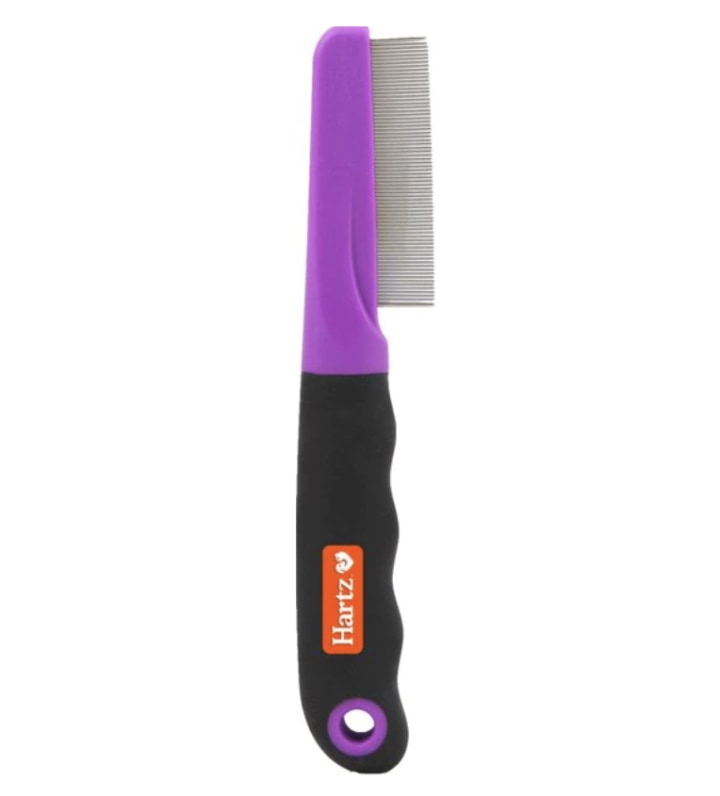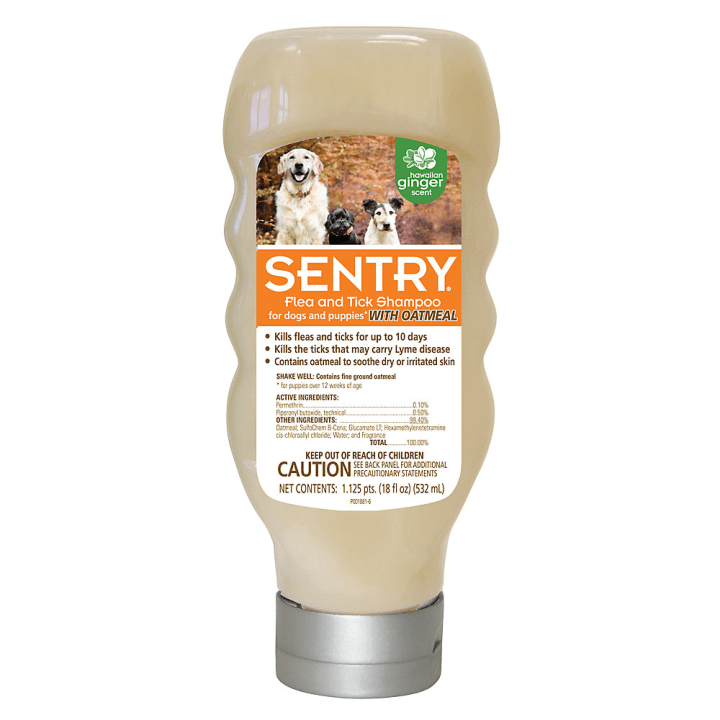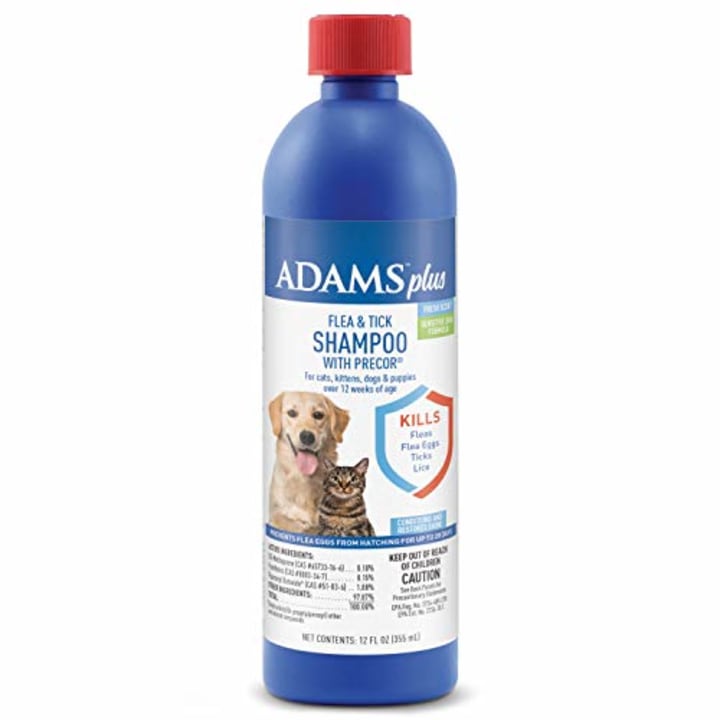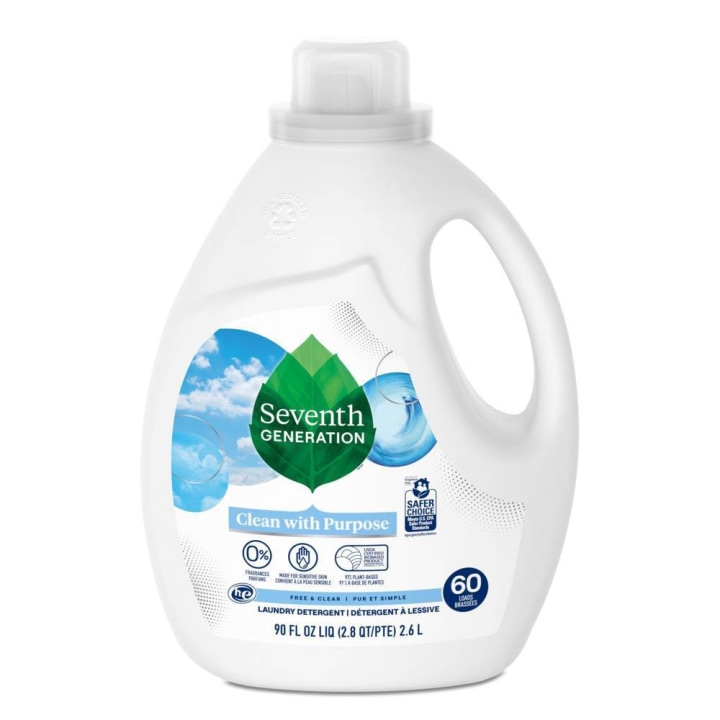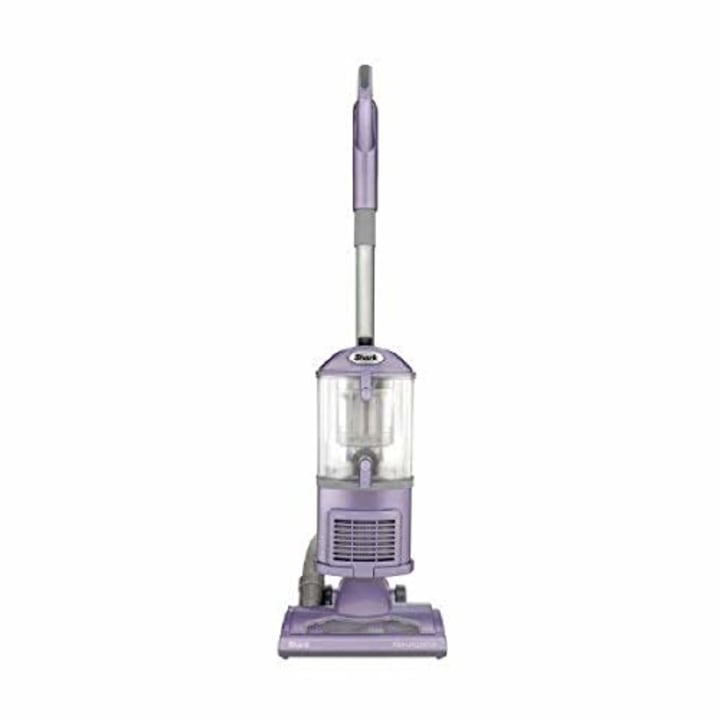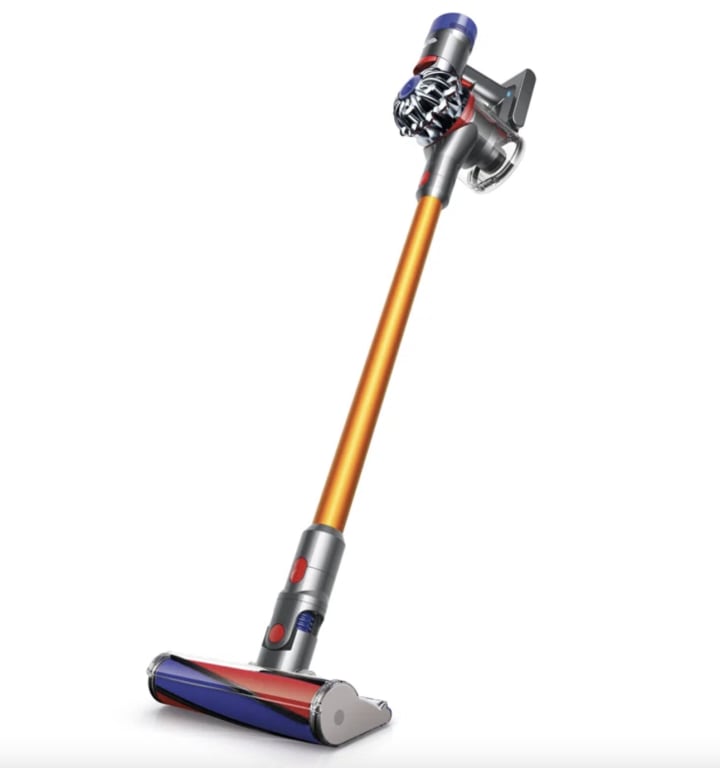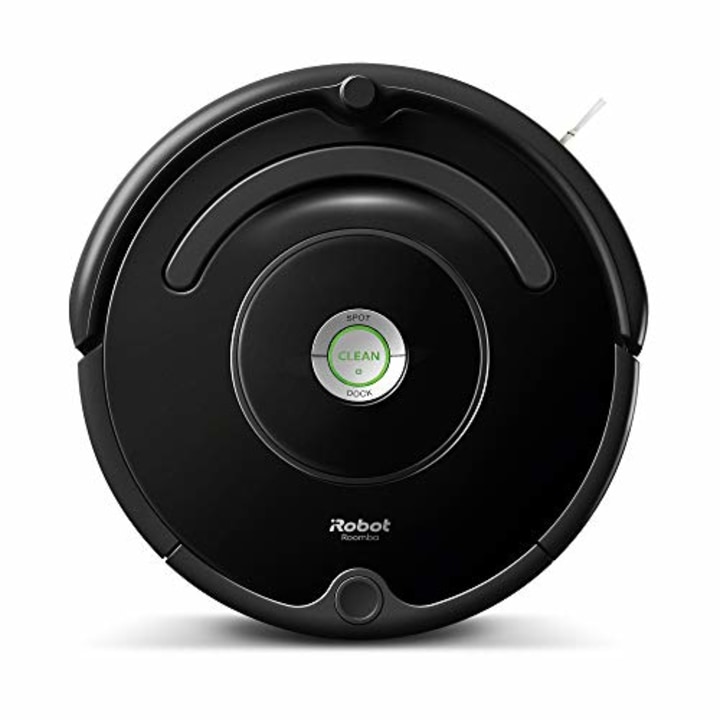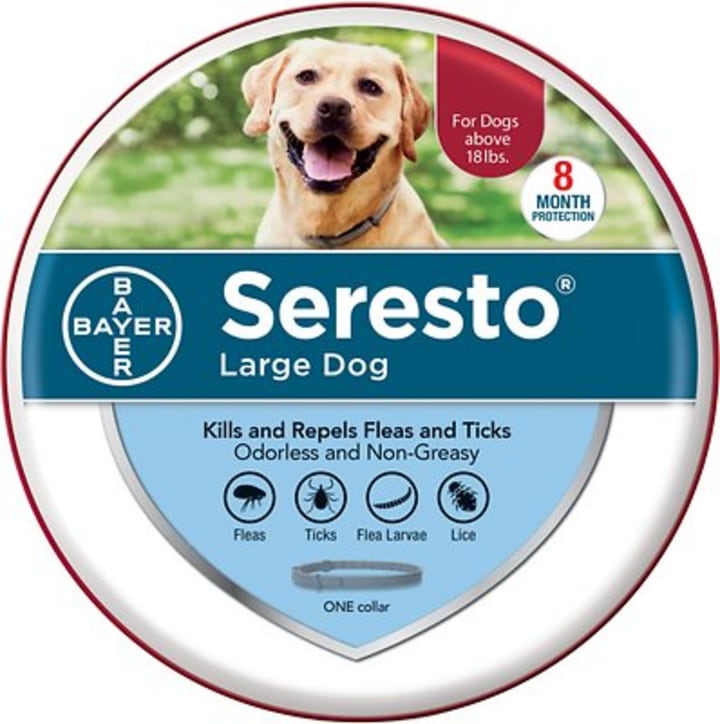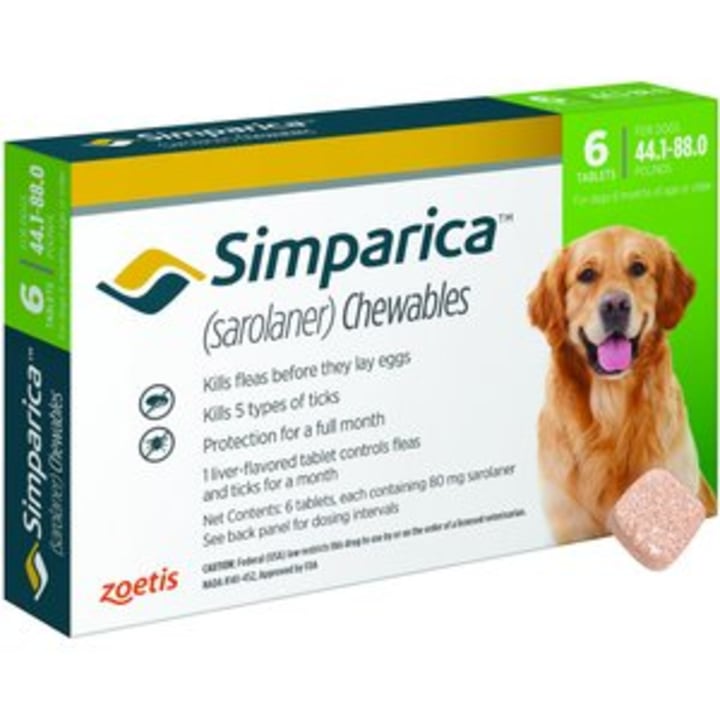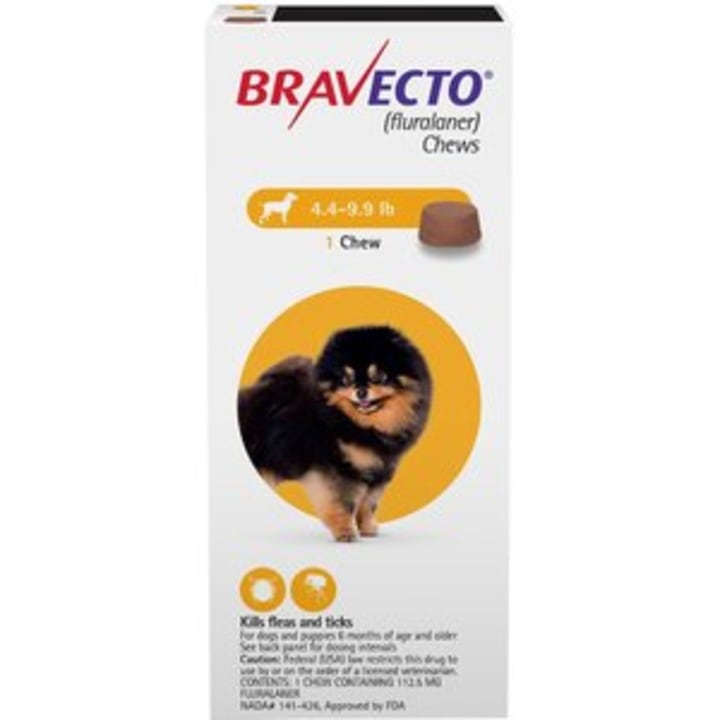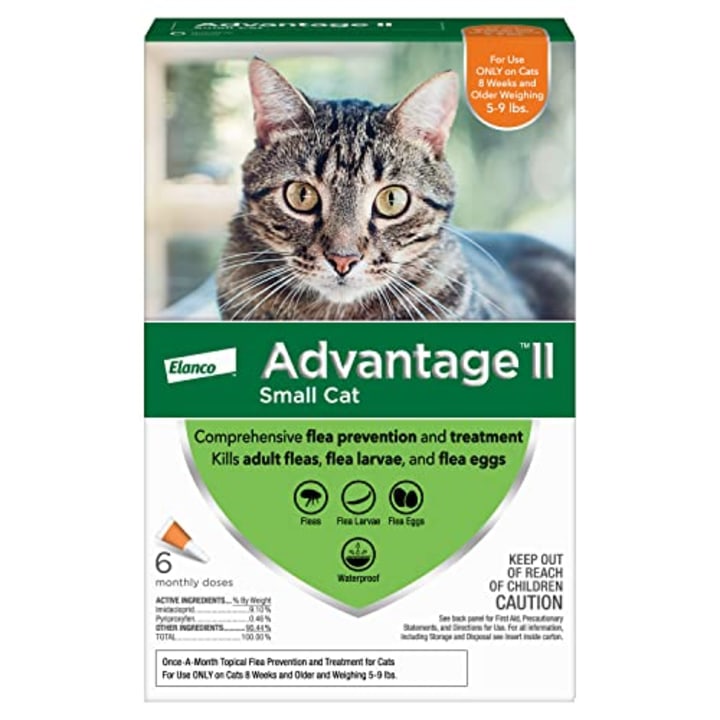In most parts of the country, temperatures are above the freezing point for the majority of the year. And unfortunately, fleas thrive in temperatures above 32 degrees Fahrenheit, which means you need to be prepared for any potential infestations. “Fleas very much enjoy kind of a hot, humid environment,” said Dr. Douglas Kratt, a small-animal practitioner at Central Animal Hospital. Even in the winter, you aren’t totally out of the woods: According to pet care products giant Hartz, although fleas die off within five days in temperatures as low as 33 degrees Fahrenheit, the cold encourages these hardy little critters to make their way into your home, where it’s more comfortable for them.
The best way to get rid of fleas is to take steps to prevent them in the first place, but if you’re dealing with a breakout, there are things you can do to clean your pet and your home. We spoke to veterinarians about the telltale signs of fleas, how to get rid of them and how to prevent them.
SKIP AHEAD How to get rid of fleas
How to tell if your pet has fleas
Identifying the signs of a flea infestation is crucial. The veterinarians we spoke to outlined three signs to watch for:
- Increased itching: Casual scratching or grooming is one thing, but if you notice your pet excessively scratching a particular area, you’ll want to inspect further. You can do so by running your fingers through or combing through their fur. “Flea bites are sharp and painful, and their salivary glands give off a substance that's irritating — or even allergic — to cats and dogs,” said Dr. Heidi Cooley, a veterinarian at Banfield Pet Hospital.
- Fleas on hair follicles: Adult fleas are reddish-brown in color and smaller than a grain of rice. You may be able to see a flea during a bad infestation, but since fleas move fast through your pet’s hair, it is often easier to spot what is called “flea dirt” (more on that below).
- Presence of “flea dirt”: Also known as flea feces, “flea dirt” looks like brownish-black dirt. If you are unsure whether what you are seeing is real dirt or flea dirt, run it under water — flea dirt will turn red under water.
How to get rid of fleas
As anyone who has ever dealt with an infestation knows, fleas can be a headache. But knowing which products can help you tackle the problem quickly and effectively.
“First of all, take a deep breath — there's a lot of really great products out there that are safe,” Kratt said. “But you should contact your veterinarian first, because they are going to know the best products suited for your individual pet. Extreme infestations can cause bleeding issues, dermatitis and other skin irritations, and they can also assist in transferring internal parasites — mainly tapeworms,” he explained. The best approach involves multiple steps that target fleas, larvae and eggs on your pet, in your house and in your yard.
The experts we consulted provided best practices for using a flea comb, shampooing your pet and disinfecting your house, along with some top products to consider buying, from flea and tick shampoos and laundry detergents to vacuums.
Step 1: Brush your pet with a flea comb
Our experts recommended initially brushing your pet with a flea comb to remove any fleas. (When you’re still trying to determine whether your pet has fleas, a flea comb can also help you spot the little guys.) Pay extra attention to the neck area and the base of the tail.
Hartz Groomer’s Best Flea Comb
Suitable for both cats and dogs, this Hartz brush is designed to easily remove fleas, flea eggs and other debris, according to the brand. The relatively affordable comb doubles as a grooming tool that can detangle knots in your pet’s hair, Hartz says.
Step 2: Give your pet a bath
According to veterinarians.org, a site run by veterinarians to keep pet parents up to date on resources and expert information, the effectiveness of a flea shampoo depends on the active ingredient used. For instance, some shampoos are plant-based, with ingredients such as rosemary oil, thyme oil and peppermint oil. For more serious cases, others contain a type 1 pyrethroid insecticide (like permethrin or bifenthrin) to kill off fleas. Whichever the case, the American Veterinary Medical Association recommends the following:
- Check with your veterinarian before using any over-the-counter shampoo, especially if your dog or cat is very young, very old, pregnant, nursing or on any medications.
- If the product contains a pesticide, be sure it is EPA-approved.
- Read the entire label before using any product.
- Follow the directions exactly and never give more than the recommended dose.
- Never use a dog shampoo on a cat and vice versa.
- Make sure the weight range listed on the label is correct for your pet.
Cooley also said to keep in mind that “shampoos can have a drying effect and a short-term period of effectiveness, so [they] are not recommended for long-term parasite prevention.”
Vet’s Best Flea and Tick Dog Shampoo
Formulated with natural oils, this flea shampoo is designed to kill fleas, flea larva, flea eggs and even ticks on your pet within hours, according to the brand. Vet’s Best also makes a plant-based formula for cats.
Sentry Flea & Tick Oatmeal Hawaiian Ginger Shampoo
This flea and tick shampoo from Sentry is meant for dogs with sensitive, dryer skin. Like Vet’s Best, this product can treat both fleas and ticks on contact, the brand says. Sentry says it conditions the skin as it effectively gets rid of fleas and ticks for up to 10 days (you will need to reapply if you still see fleas after that). The pH-balanced formula can also kill the deer ticks that may carry Lyme disease, according to the brand. The formula contains permethrin, an insecticide that can be dangerous if swallowed or overused — make sure to use the shampoo as directed and consult your veterinarian beforehand.
Adams Plus Flea & Tick Shampoo
This Adams shampoo is designed specifically for cats 12 weeks and older. In addition to its natural ingredients — which include soothing aloe, coconut extract and oatmeal — this shampoo also contains an Insect Growth Regulator that stunts flea development and is safe to use on pets and people (it only works to target insect hormones), according to the National Pesticide Information Center. Adams Plus’ shampoo also contains permethrin, so make sure your dog doesn’t consume any. The shampoo is effective for up to 28 days until you need to reapply.
Step 3: Disinfect the house
After tending to the fleas on your pet, it’s time to get rid of the infestation in your home. In most cases, it takes three to four months to completely get rid of a flea infestation since it takes fleas this long to go through their life stages, according to the American Kennel Club.
“The real battle against fleas comes down to killing those that aren’t on your cat or dog,” said Cooley. “For every flea you find on a pet, 99 others are likely hiding in your home, car, or yard.”
Kratt said vacuuming helps a lot during flea infestations, but you need to dispose of the bag immediately. “If your vacuum cleaner has a bag, you must take it outside to the garbage can immediately and tie it up. If your vacuum is bagless, you must empty it and spray the internal portion of your canister with a cleanser,” he said. Any bedding and throw rugs should also be put in the laundry.
Seventh Generation Free & Clear Natural Laundry Detergent
This detergent from Seventh Generation is hypoallergenic, safe for pets and sensitive skin-friendly, according to the brand. Seventh Generation says it’s a USDA-Certified Biobased Product that contains no dyes, fragrances or artificial brighteners.
Shark Navigator Lift-Away Upright Vacuum
One of our favorite vacuums, this budget-friendly vacuum from Shark is powerful and lightweight, weighing 12.5 pounds. It includes features like a detachable canister, a HEPA filter and the ability to transition between floor types.
Dyson V8 Absolute
If you’re looking to invest in a cordless vacuum cleaner, consider this one from Dyson. With a runtime of up to 40 minutes on a single charge, according to the brand, it’s designed to trap up to 99.99% of microparticles on hardwood and carpeting. It is also great for households with pets thanks to the Hair screw tool that removes hair from pet beds, stairs and more, Dyson says.
iRobot Roomba 614 Robot Vacuum
Cooley recommended vacuuming your home several times a week to significantly reduce your risk of infestation and help prevent flea eggs from hatching. If you don’t have the time to vacuum periodically, consider using a robot vacuum that automatically works on a timed schedule. This smart vacuum from iRobot uses smart sensors to navigate around your home and grabs dust and dirt from carpet and hardwood floors, according to the brand.
Step 4: Prevent future infestations
Flea infestations can be stressful, but by following a multistep treatment plan and listening to your veterinarian’s advice, you can efficiently stop an outbreak from happening in the first place.
According to our experts, there are three main ways to prevent fleas on your pet: collars, topical applications and oral medications. Ultimately, Kratt said the best option for your pet depends on their lifestyle and your vet’s advice.
“Preventive care is far more preferable to treatment,” said Cooley. Although there are a number of over-the-counter options, Kratt said the best programs are through prescription. His recommendations: Bravecto, NexGard and Simparica. Each of these come in chewable form and can be ordered through your vet or online through Chewy.com, which collects your pet’s prescription information upon checkout.
Another good practice, according to Kratt and Cooley, is regular baths (in addition to frequently washing your pet’s bedding). Since hot water and soap kills fleas, they said, regular washing is one of the easiest ways to prevent fleas from spreading throughout the house.
Seresto Flea and Tick Collar
A benefit of flea prevention collars — like this highly rated option from Seresto — is convenience. There is no messy application, they’re odorless and they work through contact, meaning fleas don’t have to bite your dog in order to die. This flea collar is designed to kill and repel fleas and ticks for eight continuous months, according to the brand. Seresto also offers an option for cats boasting the same flea-repelling properties.
NexGard Soft Chews for Dogs
This oral medication can be thrown in with their meals for flea prevention. According to the American Animal Hospital Association, NexGard's chews are FDA-approved to help kill adult fleas before they can lay eggs, providing protection from fleas and ticks for a full month. Unlike many of the other products we mention that make products for both dogs and cats, NexGard is made for dogs only.
Simparica Chewables for Dogs
Like NexGard, this once-a-month tablet is FDA-approved and works a full 35 days to protect your dogs from fleas before they can lay eggs, the brand says. It also shields dogs from up to five types of ticks, so you don’t have to worry about tick-borne illnesses such as Lyme disease. It can be purchased on Chewy or directly through your vet.
Bravecto Chews
Bravecto’s flavored chewables offer 12 weeks of protection against fleas and ticks, the brand says. They also come in a topical form for both dogs and cats. These can be purchased directly from your vet or through Chewy with a prescription.
Advantage II Once-A-Month Topical Flea Treatment
Advantage II is an over-the-counter topical treatment available for dogs and cats. According to the brand, it kills fleas at all life cycles. It’s applied directly to your pet’s skin, just below the fur. Unlike oral flea medication that circulates flea-fighting ingredients in your pet’s bloodstream, this topical treatment from Advantage II is designed to kill through contact and doesn’t require the flea to bite your pet for it to be effective. The product should start working within 12 hours and stays effective for 30 days (at which point you need to apply again), according to the brand.
How fleas attach to your pet
Fleas can survive for up to two weeks without a host — your pets can come in contact with them in backyards, dog parks and kennels, not to mention contracting them from another animal that has fleas. Once an adult female flea attaches to your pet, she can lay as many as 50 eggs per day and live up to 100 days (depending on how old she was upon attachment). The female flea will start laying eggs “within a day” of attaching to your pet, Kratt said, and within two to 16 days, those eggs will hatch into larvae, which then grow into pupae — this is the cocoon stage, the last developmental stage before the adult flea emerges.
Catch up on Select's in-depth coverage of personal finance, tech and tools, wellness and more, and follow us on Facebook, Instagram and Twitter to stay up to date.


